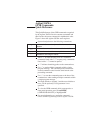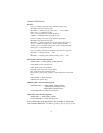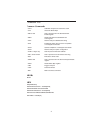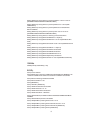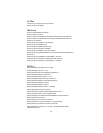
Parameter Definitions:
<BLOCK>
If you are sending binary data using indefinite length syntax,
<BLOCK> takes the following form:
<BLOCK> ::= #0<data_byte>[,<data_byte>] . . .<LF><^END>
<data_byte> ::= unsigned 8-bit data
<LF> ::= line feed character, ASCII decimal 10
<^END> ::= GPIB END message (EOI set true)
If you are sending binary data using definite length syntax,
<BLOCK> takes the following form:
<BLOCK> ::= #<byte><length_bytes><data_byte>[<data_byte>] . . .
<byte> ::= number of length bytes to follow (ASCII encoded)
<length_bytes> ::= number of data bytes to follow (ASCII encoded)
<data_byte> ::= unsigned 8-bit data
If you are sending ASCII data, <BLOCK> takes the following form:
<BLOCK> ::= Integer[,Integer]. . . <LF>
or
<BLOCK> ::= Floating-point number[,Floating-point]. . . <LF>
<FILENAME> takes the following form:
<FILENAME> ::= ‘[MSIS:][\DIR_NAME\]filename’
where MSIS: must be replaced with:
RAM: which selects volatile RAM.
NVRAM: which selects non-volatile RAM.
INT: which selects the internal disk drive.
EXT[,<select_code>[,<unit_number>]]: which selects the external disk
drive.
\DIR_NAME\ ::= ASCII characters
(MS-DOS file systems only)
<MMEMNAME> takes the following form:
<MMEMNAME> ::= ‘[MSIS:][\DIR_NAME\]filename’
‘MSIS:[\DIR_NAME\][filename]’
_ ‘MSIS:[\DIR_NAME\]filename’
See <FILENAME> for additional information.
<MSINAME> takes the following form:
<MSINAME> ::= ‘MSIS:[\DIR_NAME\]’
See <FILENAME> for additional information.
For more information about parameters, refer to chapter 2, “Introduction
to the Command Reference,” in GPIB Programming with the Agilent 35670A.
2



